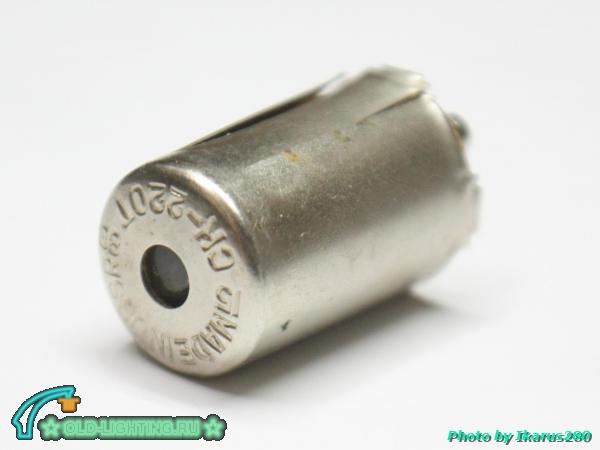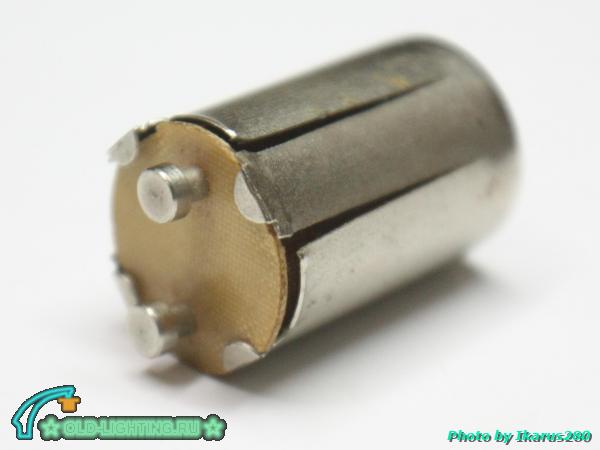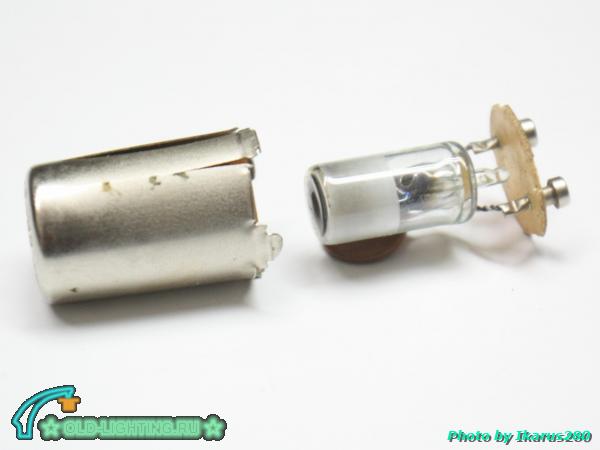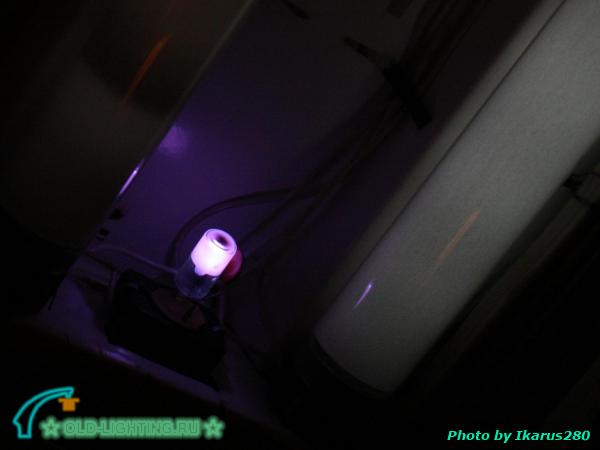15-80/СК-220Т (Noname (СЛЗ))
 (4)
(4)
Тип: 15-80/СК-220Т
Изготовитель:
Страна происхождения:
Дата выпуска: 1980...1989
Самый экзотический стартер, который я встретил за всю жизнь. Корпус из латуни с покрытием, имеет пару трещин, при разборке я надеялся найти год выпуска на конденсаторе, но обнаружил колбу, покрытую люминофором (?) на половину. На предпоследнем фото фиолетовое свечение. Тип стартера как-то намекает на «тропическое» исполнение.
Из коллекции  Ikarus280. Добавлено: чт, 07.10.21, 01:54
Ikarus280. Добавлено: чт, 07.10.21, 01:54
 Ikarus280. Добавлено: чт, 07.10.21, 01:54
Ikarus280. Добавлено: чт, 07.10.21, 01:54 (4)
(4)
- Войдите или зарегистрируйтесь, чтобы отправлять комментарии











Комментарии
На люминофор не похоже, скорее светорассеивающее покрытие – чтобы лучше контрольное окошко светилось.
Исполнение экспортное, очевидно для стран с тропическим климатом. Как вариант – для использования на морских судах.
О, стартеры моего детства, с такими колбами и двумя пластинками внутри "домиком" и с таким-же покрытием были уже в начале 80-х, любимая добыча на свалках . Только вот кондюк был плоский и длинный, непременно коричневый.
. Только вот кондюк был плоский и длинный, непременно коричневый.
А свечение и правда похоже на люминофор, светится ярче чистого разрядаЛюминофор должен другим цветом светиться.
I have seen such a coating in American vintage starters and in some of the newer style starters for use with discharge lamps that can use a starter instead of an dedicated ignitor (IZU). This coating is infact a getter to much prolong the life of the starter. Using a getter the vacuum inside the bulb has much purer atmosphere, because the vacuum pumps in the factory can not sufficeantly suck out all the oxygen inside and replace it with inert gas, so a getter is used as when it is activated after pumping and sealing it draws out all remaining oxygen molecules from the inside of the flask and leaves only inert gas behind, and much greater vacuum. This makes the discharge much purer and not nearly as hot so the sputtering is greately reduced and the life of the starter is much extended. You never seen a tube soviet starter with a getter coating. It was always the cylindrical ones from 60s - 70s in these SLZ starters. I sincerely believe it was a getter applied to prolong the starter life. This is the main reason why you rarely find these starters with burned capacitors inside due to starter bulb ovreheating, or stuck ones from EOL lamps. I have in my collection starters with such flasks that are absolutely blackened from switching high power EOL 80 watt lamps for years on end, and they still happily strike a LB40. Compare that with a simple convulsing C80-220 if it flashes a EOL 80 watt lamp for longer than a few days it will start to burn and get stuck.
The newer 80C-220 starters from SLZ were good enough to survive at least several 40W EOLs. In 1990s, it was quite a surprise to me to find out that Osram recommended to replace starter every time you change a EOL lamp, with Soviet starters it did not make sense (except for Armenian ones, but this is another story ).
).
Interesting, yes, I agree with you on that the soviet starters were basically indstructible. I have seen in my old school a LD36 with was flashing EOL for around half a year, and when it was eventually replaced, the c80-220 starter was still lighting up new tube like it was nothing. I have in my collection Armenian starter, a little used but stil working, it has a neom red glow. Why did you mention it? Were armenian starters bad? I'm really interested to know the story behind them
Well, there's kind of an urban legend around Armenian products (lamps, starters, luminaires, I even heard the same about cars) as being completely disposable . This has nothing to do with nationalism or so, it's just an ascertaining of a historically very poor quality management in this region.
. This has nothing to do with nationalism or so, it's just an ascertaining of a historically very poor quality management in this region.
Speaking of starters, they were just terrible – CK-220/80C-220 steadily died during their first lamp's EOL, and 20C-127 did the same even long before! The inner bulb very quickly became completely black, and the ignition time increased up to half an hour or even more, making such a lamp practically unusable.
Same with most lamps, they were the worst in USSR in terms of real average life – which was about two to three times less than was prescribed by the standards.
This is really inetersting, I never knew that, thank you for telling me. Though, I imagine that Armenian lamps would still outlive PZGRL fluorescent lamps. I have seen new 1985 date of manufacture LDC40 go EOL after just a few weeks. It was installed in a classroom if my ver yfirst school, and I remember always watching it iduring the boring history lessons because it was right above my desk and it went EOL after 3 weeks of use, during those three weeks the end became just barely blackened, but the lamp couldn't ignite anymore and went to just flashing while one end was plain orange.
Well, those two (YELZ and PZGRL) always competed for the bottom quality products, but I think Armenia was the winner
Speaking of PZGRL, I have a surprisingly similar documented experience: once I installed at home a brand new LDC40-1 made in 1987, hoping it would last rather long. Just imagine how surprised I was when it started blackening at both ends after less than 20 hours of operation . Then I watched how the blackening grew until the lamp completely burned out after about 600 hours of total usage, which equals to about 2,5 months life in public buildings
. Then I watched how the blackening grew until the lamp completely burned out after about 600 hours of total usage, which equals to about 2,5 months life in public buildings  . I guess simple GLS lamps often last much longer than this.
. I guess simple GLS lamps often last much longer than this.
Once I attempted to build an unofficial rating of fluorescent lamp quality per Soviet manufacturer. The top was shared by MELZ and VNISI experimental plant, the second place was held by SLZ, SELZ and BELZ (Baku, Azerbaijan), and the bottom was occupied by PZGRL and Yerevan...